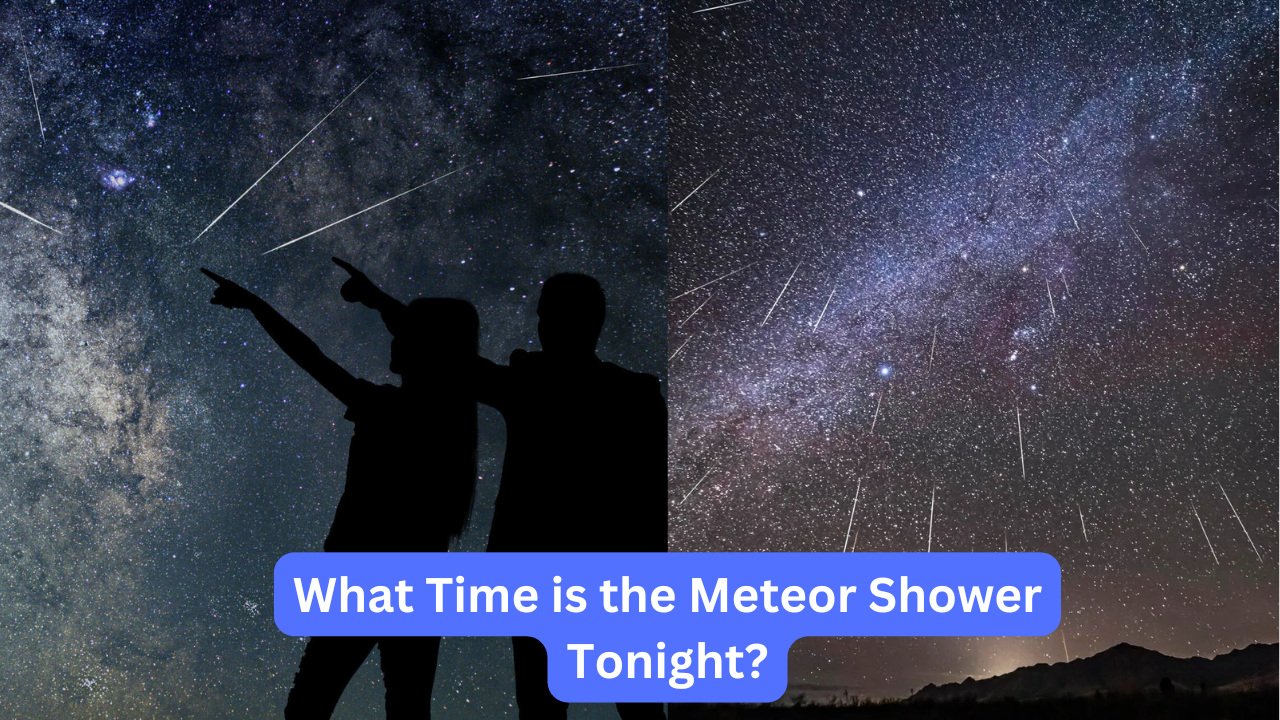The night sky has always been a canvas for celestial events that captivate the hearts and minds of people across the globe. Among these phenomena, meteor showers stand out as one of the most thrilling spectacles. If you’re wondering, “What time is the meteor shower tonight?”, you’ve come to the right place. In this detailed guide, we’ll provide you with everything you need to know to catch the stunning light show overhead.
Meteor Showers
Meteor showers occur when Earth passes through the debris left by a comet. As these tiny fragments enter our atmosphere at high speeds, they burn up and produce bright streaks across the sky, commonly known as “shooting stars.” Depending on the time of year, different meteor showers take place, each associated with a particular comet.
What Meteor Shower is Happening Tonight?
Before determining the exact time of tonight’s meteor shower, it’s essential to know which meteor shower is currently active. Some of the most prominent meteor showers include the Perseids, Geminids, Leonids, and Quadrantids. Each has its peak time and optimal viewing conditions.
Optimal Viewing Conditions for Meteor Showers
To maximize your meteor shower experience, consider the following factors:
**1. Location:
- Dark Skies: The darker the sky, the more meteors you’ll see. It’s best to move away from city lights to a rural location where light pollution is minimal.
- Elevation: Higher elevations can provide a clearer view of the sky, making it easier to spot meteors.
- Clear Skies: Cloud cover can obstruct your view. Check local weather forecasts to ensure a clear night.
**2. Time of Night:
- Pre-Dawn Hours: Generally, the best time to view a meteor shower is in the early morning hours before dawn. At this time, the sky is darker, and more meteors are visible.
- Radiant Point: The shower’s radiant point (the part of the sky from which the meteors appear to originate) rises higher as the night progresses, increasing the likelihood of seeing more meteors.
**3. Tools and Equipment:
- Naked Eye: The best way to watch a meteor shower is with your naked eyes, as telescopes or binoculars can limit your field of view.
- Comfort: Bring a reclining chair or blanket to lie back and watch the sky comfortably for extended periods.
What Time Will the Meteor Shower Peak?
The peak time for a meteor shower is when the radiant point is highest in the sky, typically during the pre-dawn hours. However, the exact time can vary based on your geographical location and the specific meteor shower.
For instance, during the Perseids Meteor Shower, which peaks in mid-August, the best time to observe the shower is usually between 2:00 AM and dawn local time. Similarly, the Geminids, which peak in December, are best viewed after midnight.
Checking Local Times:
To determine the exact peak time in your area:
- Consult Astronomical Apps: Apps like SkySafari, Star Walk, or Stellarium can give you precise times based on your location.
- Online Resources: Websites like Time and Date or the American Meteor Society provide detailed schedules and tips for viewing.
How to Prepare for Tonight’s Meteor Shower
Preparation is key to enjoying a meteor shower. Here’s a quick checklist to ensure you’re ready:
**1. Set Up Early:
- Arrive at your chosen viewing location at least an hour before the peak time to allow your eyes to adjust to the darkness.
**2. Dress Warmly:
- Nighttime temperatures can drop significantly, so dress in layers and bring blankets to stay warm.
**3. Stay Informed:
- Keep an eye on the weather forecast and be prepared to adjust your plans if clouds or rain are expected.
**4. Bring Snacks and Drinks:
- A thermos of hot chocolate or coffee and some snacks can make the experience more enjoyable, especially if you’re out in the cold.
Why You Shouldn’t Miss Tonight’s Meteor Shower
Meteor showers offer a unique opportunity to connect with the natural world and witness a cosmic event that has fascinated humans for centuries. Whether you’re an amateur astronomer or simply enjoy gazing at the night sky, tonight’s meteor shower promises to be an unforgettable experience.
Capturing the Moment:
While the best way to enjoy a meteor shower is with your own eyes, you may want to capture the moment with a camera:
- Use a Tripod: Stability is crucial for long-exposure shots.
- Set a Long Exposure: 15 to 30 seconds can capture multiple meteors in one frame.
- Adjust ISO Settings: Higher ISO settings will help you capture more light, but be careful not to increase it too much, as it can result in grainy images.
Final Thoughts
Tonight’s meteor shower is not just a fleeting event but a reminder of the grandeur of our universe. By following the tips provided in this guide, you can ensure that you won’t miss out on the best viewing experience possible. So grab your blanket, find a dark spot, and let the night sky reveal its wonders.
